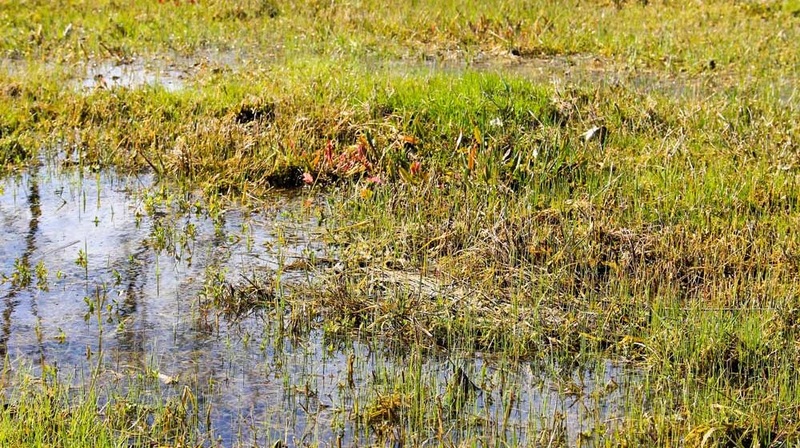
French Drains: A Soggy-Ground Solution
A French drain may be the solution for homeowners with low, soggy spots in their lawns. This underground outlet is an unseen but effective way to channel excess water from problem areas to a targeted drainage space.
Proper drainage is essential for healthy turf. Standing water presents a host of problems–it can kill grass and other plants, become a mosquito breeding ground, and ruin a landscape.
If you’ve got perpetually soggy areas in your lawn, French drains may be the solution. Unseen and unobtrusive, they provide an underground outlet for water that might otherwise pool in low places.
When Are Drains Needed?
Installing a drain becomes necessary when water doesn’t run off naturally. Ideally, every lawn will be graded correctly so excess water ends up where you intend it to go—maybe a retention pond or drainage ditch. But that doesn’t always happen.
Sometimes depressed areas in a lawn are created after installing a yard feature or structure. It’s important to factor in drainage considerations when carrying out other landscaping projects.
What is a French Drain?
A standard French drain is an underground pipe that creates a void in the ground, allowing the soil to soak up more water volume than it would otherwise. Its essential features include the following:
- small holes, regularly spaced along the entire length, that allow water from the soil to enter the pipe
- a 1% grade that directs water to flow down and out instead of pooling inside
As water collects in problematic low areas, it flows into the pipe and out to the target drainage place. This prevents water from sitting on the surface of the ground and creating a soggy spot.
DIY Installation
This type of drain is simple enough to be installed by most homeowners. After collecting the necessary supplies, you can complete the project in a few steps.
- Dig a trench from the problem area to the target drainage area.
- Pour a 1-2-inch base layer of gravel.
- Lay the perforated pipe on top, ensuring the perforations are facing down at about a 45-degree angle.
- Install an inlet grate.
- Fill the space over and around the pipe with soil.
The most laborious step will likely be digging the trench. Consider renting a trencher to save time and energy; you can expect to pay around $100 per day for this piece of equipment.
Remember the Grade!
French drains are designed around the gravitational principle that water runs to the lowest point. After all, that’s why it’s standing in the low area of your lawn. It’s also the reason that a drainpipe will be ineffective if installed at less than a 1% slope.
Too much grade and the pipe will lead straight into the ground and not reach the target area; too little and the water will stagnate.
Other Uses
French drains are most commonly used to direct water away from depressed areas, but if necessary they can also route it to an area that isn’t receiving adequate water.
Additionally, installing them behind a retaining wall will relieve hydrostatic pressure. Built-up water pressure can cause significant damage to a wall, such as cracking and bulging.
Call Before You Dig
Finally, call 811 before beginning any digging project. This nationwide hotline service ensures that homeowners don’t accidentally dig into an underground utility line. Make the call several days in advance, and have basic information about your property and project when you do.